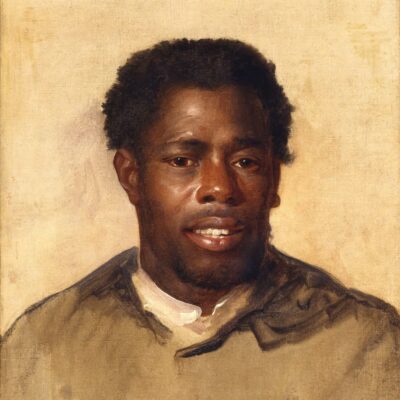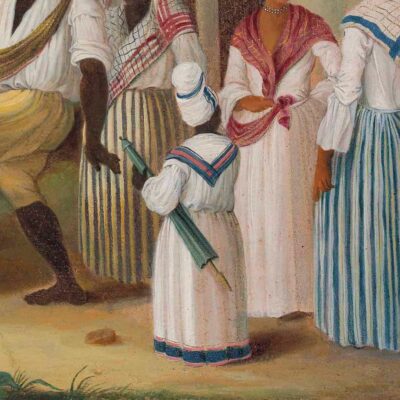Editorial Note
Editorial NoteBecause this project relies on especially careful attention to two processes, the transcription and modern translation of eighteenth-century manuscript texts, a note to the reader is in order.
The Manuscripts
The ManuscriptsEighteenth-century French court testimony was oral; transcriptions were written by scribes who were clerks of the court, and occasionally by prosecuting judges. Certain other documents included in the trial records were penned by members of the Louisiana Superior Council, the attorney general, and sometimes by individuals with a stake in the court case—for example, letters addressed to the court and filed with the case. Spelling was not standardized in the eighteenth century, neither for words nor for names, hence there can be variations even within the same document. There are other quirks in how words were written, some common (such as when s and z are used interchangeably), others specific to an individual’s orthography or handwriting. At the same time, manuscript letters cannot always be rendered typographically, though every attempt has been made to do so as accurately as possible. In addition, French court conventions freed scribes from using any punctuation or accent marks.
Despite my commitment to preserving the original text in the transcriptions, some editorial decisions were required. In my transcriptions of the French, I have left original spellings, capitalization, and punctuation intact, although I have occasionally added accent marks and clarified abbreviations where there might be ambiguity. I have eliminated stray marks or handwriting quirks, and interpolations above the line have silently been inserted in the text. Readers can refer to the manuscript page should they wish to compare.
Beyond these issues with the way words were written down, the archive has also suffered from the ravages of time. Some documents have tears, folds, ink bleeding from the reverse page, and glue (from earlier attempts at conservation). In the transcriptions and translations, “[dam.]” is used where the document is damaged in the space where a word had been written, and brackets are used where the word or parts of the word are still legible, or “[ill.]” where not.
The Translations
The TranslationsAs a whole, the documents are striking in their ability to convey the flavor of the original speech of those who testified, down to the inclusion of dialogue (including rare snatches of Creole), metaphors, and colloquialisms. In translating, I have aimed to be as literal as possible, in an attempt to preserve the sentence structure and, with it, the tone and spontaneity of the original testimony. I have also tried to convey the original syntax of Creole linguistics or other forms of speech. This includes French legal formulas of usage and phrasing for which there is no direct equivalent in English given that the French legal system differs in significant ways from the English one. In the interest of readability, I have included punctuation marks and standardized capitalization in the English translations as well as the formatting of dates, marginalia, and signatures. I have further signaled reported dialogue in quotation marks in the English translation.
I have also elected to adhere to certain terms that are particularly important to understanding eighteenth-century Louisiana. Marronage refers in French and English to the act of being a runaway, and has been retained for the translation. In contrast, to be maron, or to be a maron, meant to be a runaway (as opposed to the English word maroon, which is not an exact translation), so the terms runaway or running away are used in translation. The terms negre and négresse (or less commonly, negritte and negrillon, for a girl or boy respectively) denoted males and females of African origin, irrespective of whether they were born in Africa or not, whether free or enslaved, variables which makes it hard to substitute a more neutral word since there is not always enough information to determine if the person was free or enslaved, or where they were born. In referring to individuals, the term Creole is used in its eighteenth-century meaning as denoting anyone of foreign extraction born in the colony, whether of African or European descent. Where a deponent’s ethnic group or point of origin in Africa (what the French call “nation”) is given in the document, especially when a deponent self-identifies as such, I have included this information.
In the commentaries, I have retained references to the owners of enslaved individuals, an identification that was required by law when an enslaved person testified. This decision was not undertaken lightly but rather in the interest of making it easier for readers to identify and trace individuals who are known in the archive only by their first name. Conversely, I have eschewed conventional editorial practice in the transcriptions and translations with regard to adding information about all individuals mentioned, in conscious acknowledgment of the imbalance in information available on the enslaved versus the colonists and officials referenced in the texts. My objective in this project is to foreground the enslaved and their archive of testimony, which is also why I have chosen to include the original French alongside the English translation in the commentaries when we hear the voice of an enslaved person.
Suggested Resources for Translations:
“Dictionnaires d’autrefois,” The ARTFL Project, https://artfl-project.uchicago.edu/content/dictionnaires-dautrefois
Dictionnaire de l’Académie française, https://www.dictionnaire-academie.fr












